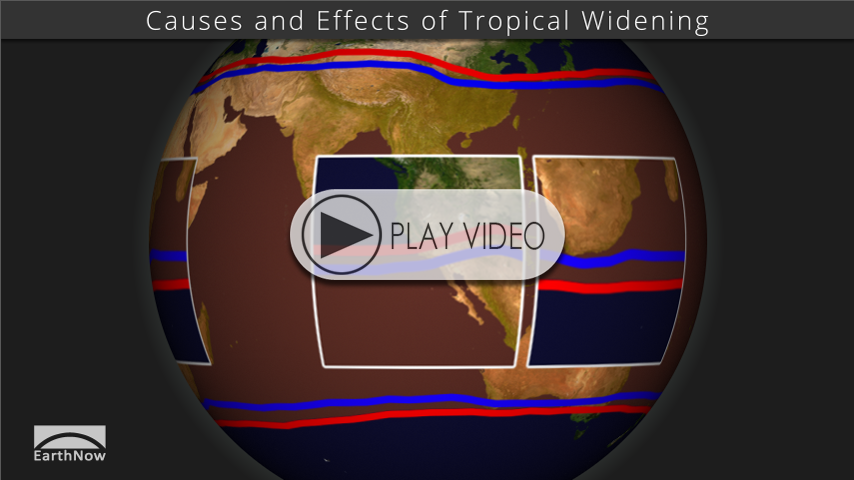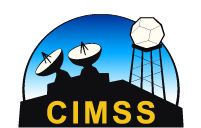SOS Playlists
 SOS Playlist
SOS Playlist
 SOS AutoRun/Audio Playlist
SOS AutoRun/Audio Playlist
Overview
With the help of satellite data, scientists studying the Tropics and other climate zones have been tracking changes over time. Here the Tropics is highlighted in orange. Recent studies show the Tropical zone is expanding toward the poles. Why do we care if the Tropics expands? This widening spreads Tropical diseases to new places and drought to the Subtropics, where much of the world’s population lives.
About the Dataset
Dataset Name: 20130715 EarthNow: Tropical Widening
Audio Dataset Name: 20130715 EarthNow: AUDIO Tropical Widening
- The first part of the visualization introduces the general locations of the tropics (orange), as well as the basics of atmospheric circulation, including the trade winds and Hadley cell circulation.
- Following this introduction, total column ozone data is shown for several seasons and ends with conveying how that data is used to identify the boundary between the Tropics and Subtropics. The measurable change in total column ozone between the Tropics and Subtropics is used to identify the boundary between the two.
- After explaining how scientists determine the boundary, we are shown average the boundary of the tropics during the 1980-1984 time frame (blue lines, orange shading), and then the average boundary of the tropics during the 2008-2012 time frame (red lines, orange shading).
- We can see how the tropics boundary has expanded poleward.
- The effects of this expansion is then conveyed, the primary effects being increased drought in the subtropics, as well as mosquito-borne disease.
The Impact
The Tropics is the area around the equator where prevailing trade winds blow from east to west. Trade winds are caused by the Sun heating the equator more than the North and South Poles. When the Sun heats land and ocean around the equator, warm, moist air rises creating clouds, storms and rain. The air loses heat and moisture through rainfall.
At the top of the atmosphere, the air moves away from the equator toward the poles, sinking as drier air in the Subtropics. There we find dry zones and deserts in areas where the prevailing surface wind doesn’t travel over water to replenish its moisture.
From data collected by satellites and weather balloons, scientists have measured widening of the Tropics by about 10 degrees of latitude over the past 30 years. These data show a greenhouse gas called ozone made of three oxygen atoms. Satellites measure ozone between the ground and the top of the atmosphere, or total column ozone. High amounts are shown in dark blue, low amounts in light blue to white. Ozone at the top of the atmosphere forms naturally and is good, shielding us from the Sun’s ultraviolet rays that cause sunburn. Bad ozone near the ground is caused by pollution and damages plants and people’s lungs. The measurable change in total column ozone between the Tropics and Subtropics is used to identify the boundary.
A change in the extent of the Tropics has occurred over the last few decades. The northern edge of the Tropics has shifted northward by an average of 4 degrees while the southern edge has shifted southward by about 6 degrees. That’s a widening of about 10 degrees over 30 years.
It might not look like much, but it has significant impact. Widening the Tropical zone poleward impacts storm tracks and the water cycle, affecting places were many people live.
Increased drought is likely in places such as the southwestern United States, the Middle East, and southern Australia. Additionally, tropical diseases such as the mosquito-borne dengue fever are starting to spread poleward, as recent outbreaks in Florida, Portugal and even Russia have been reported.
Understanding how climate zones are shifting will guide decisions about how to address changes, from where to plant crops to developing vaccines.
Where do I find the datasets?
-
First, check your SOS system to make sure it’s not already in the EarthNow category.
-
If not, you can download the datasets and playlist files from this FTP Site.
-
Then download and use playlist files at the top of the page (or create your own) and make sure they are in /home/sos/sosrc or /home/sosdemo/sosrc.
-
More detailed information here
-
Magic Planet version







